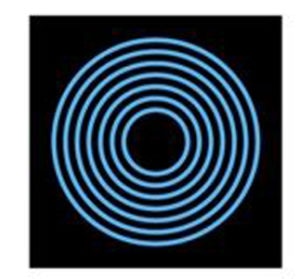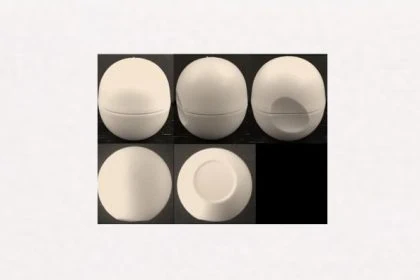The European Court rejected the registration of a Union figurative mark for sealing modules for a sign of concentric circles in classic company colors: signs composed exclusively of the shape necessary to obtain a technical result, are precludet from registration. Acquired distinctiveness through use does not compensate a technical result of a sign and trademark.

At the centre of the case was a trademark registration by the applicant Roxtec AB (Sweden) of a sign with concentric circles in blue and black as a Union figurative mark. The desired trademark registration was made for Nice Class 17 and the goods “Cable and pipe penetration seals made of plastic or rubber”. This is relevant because the trademark applicant develops and markets sealing modules that were protected by patent until 2010. The intervener Wallmax Srl (Italy), which manufactures and markets similar sealing modules, filed an opposition against the figurative mark on absolute grounds of invalidity since the figurative sign is the view of a cable sealing module.
The Cancellation Division rejected the opposition and found objective differences between the contested mark and the shape of the applicant’s sealing module. The Board of Appeal, which was subsequently seised, annulled that decision and upheld the application for a declaration of invalidity. The front surface, which clearly shows the concentric circular structure, contains all the relevant information necessary to achieve the intended technical result, explained the Board of Appeal. It is the precise representation of the final view of the concentric removable layers and thus of the main feature of the sealing module.
Figurative mark in the company’s signal colours
In support of its sole objection to the Board of Appeal’s decision, Roxtec essentially argued that the contested mark was not the shape of the product in question, since it merely referred to the sealing module and did not describe it and since certain features of a sealing module are not reproduced in the figurative sign. According to the applicant, the Board of Appeal wrongly took into account only concentric circles as an essential characteristic of the mark at issue, the colour scheme and two design elements were also essential. Relevant consumers will perceive the contested mark as a figurative mark in its product line in the classic signal colours of the company Blau and Schwarz.
Shape of a product sign for technical result
The European Court rejected the applicant’s objection and gave a detailed account of the case-law and the legal situation concerning Article 7(1)(e)(ii) of Regulation 2017/1001 on signs consisting exclusively of the shape of goods which is necessary to obtain a technical result. Such signs are excluded from trade mark protection.
Unlike the assessment of the distinctive character of a mark, the assessment of a possible technical result or function of a mark does not take into account the perception of the relevant consumer, the CJEU clarified. The average consumer may not have the necessary technical knowledge. The functional analysis referred to in Article 7(1)(e)(ii) is carried out objectively on the basis of its graphic representation and the descriptions submitted at the time of filing the trade mark application.
Colour combination not an essential feature of the figurative mark
It is therefore irrelevant in this case whether consumers would perceive the contested figurative mark in the classical corporate colours. The combination of the colours black and blue cannot be regarded as an essential characteristic since it has acquired distinctive character through use. Moreover, the combination of colours referred to above serves only to highlight the series of concentric circles in the contested mark by the contrast between the square black background and the blue of the concentric circles on that background, which is therefore a minor arbitrary element and not an essential decorative element.
Even where a shape of goods which is necessary to obtain a technical result has become distinctive through use of a trademark, registration as a trademark is prohibited under Article 7(3) of Regulation 2017/1001, the CJEU stated. Accordingly, the distinctive character acquired by the use of a sign is not relevant for the identification of its essential characteristics.
Several technical solutions for sealing modules
Roxtec also claimed that there were several technical solutions for a sealing module on the market. But even that was not relevant for the exclusion from trademark protection under the aforementioned regulation, the CJEU clarified. The shape of the sign in question is by no means the only one capable of achieving the technical result in question.
European Court rejected action
The CJEU found that the essential characteristic of the shape in question was the concentric circles, which constitute the removable concentric layers of the sealing module. Thus, the concentric circles would combine the properties that are technical and sufficient to achieve the intended technical result, namely that they can be peeled individually until the correct diameter for the insertion of a cable is achieved.
The CJEU therefore dismissed the action brought by Roxtec AB, the trade mark applicant, in its entirety.
Would you also like to protect or defend your trademark or brand?
Our lawyers are experienced in trademark and patent law, national and international law.

Sources:
Judgement of CJEU EU:T:2019:674 “concentric circles”
Image:







Leave a Reply